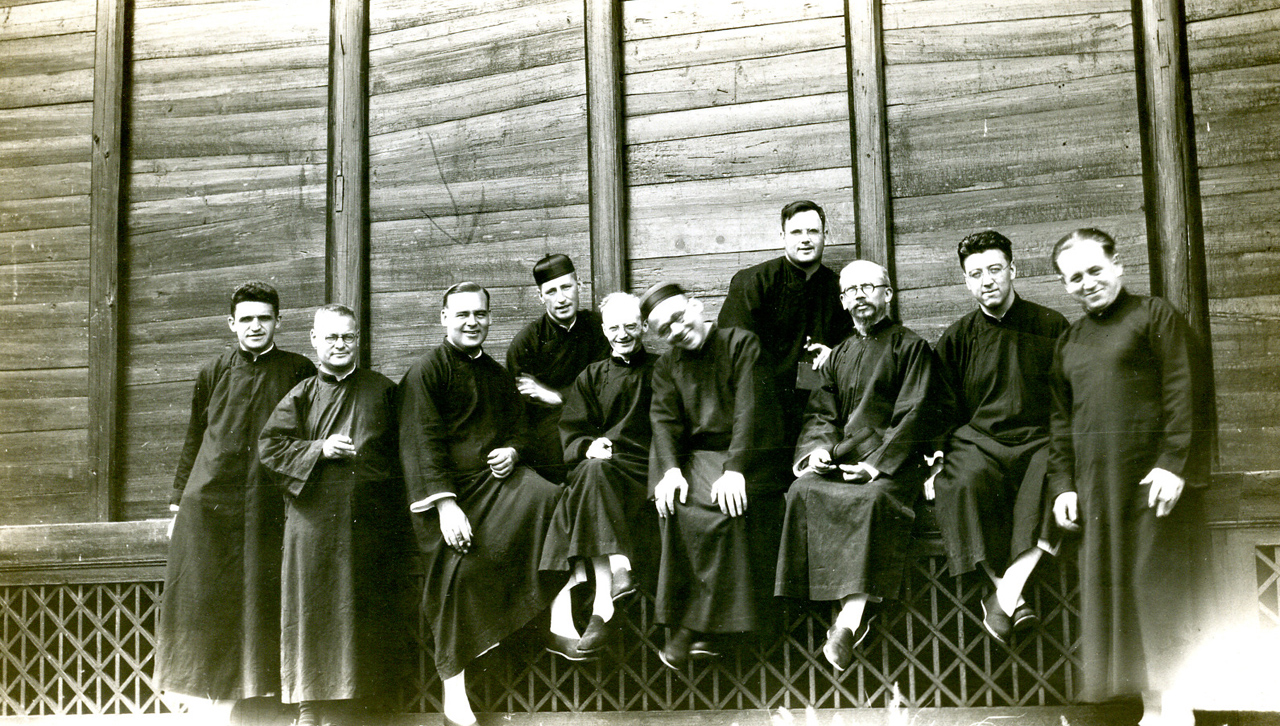Passionist China Collection Finds Home at Scranton

In July 2012 the Weinberg Memorial Library became the permanent home for the Passionist Historical Archives of the St. Paul of the Cross Province. The collection had previously been held at the East Coast headquarters in Union City, N.J. Most of the archives arrived in the McHugh Special Collections and University Archives in 2012 with the exception of the Passionist China Collection portion. The China Collection was sent to the Ricci Institute for Chinese-Western Cultural History at the University of San Francisco to be digitized. Passionist historian Rob Carbonneau, C.P., Ph.D., collaborated with the Ricci Institute to oversee the successful digitization of the collection. The Passionist China Collection finally arrived in McHugh Special Collections in late August 2016 to join the rest of the Passionist Historical Archives.
The Passionists are a Roman Catholic religious congregation of priests and brothers. Eighty Passionist missionary priests, among whom was one religious brother, were sent to West Hunan, China, and remained there until they were expelled in 1955. Efforts began with a singular mission of St. Paul of the Cross Province, but in 1923 Passionists from Holy Cross Province from Chicago joined by contributing personnel and resources. In addition, several orders of religious sisters worked in conjunction with the Passionists, most notably the Sisters of Charity of Convent Station, N.J., and the Sisters of St. Joseph, Baden, Pa.
The significance of the Passionist China Collection is that it is a record of the relationship between American missionaries and local Chinese communities from the 1920s to 1950s. The collection documents social aspects and cultural life in China during this period and describes the missionaries’ comments on daily life, social and political experiences, interpersonal relations, and evangelization efforts.
The collection consists of approximately 300 archival boxes (roughly 91,000 images) of reports, correspondence, diaries, administrative records, financial reports, baptismal records, deeds, and some audio materials. Most important, approximately 10,000 photographs from China show missionaries’ interactions with the local people, which were widely used in the publication of The Sign magazine (1921- 1982). The Sign has been completely digitized and is a significant resource for scholars and students because the magazine was the primary means of promoting evangelization in China and communicating with benefactors to show how donations were used. In addition, more than 100 hand-colored glass lantern slides in the collection depict missionary interactions with the Chinese community.
Scholars and students actively use the Passionist Collection, and it is expected that the Passionist China Collection will serve as a significant resource to understanding Chinese Catholicism during the Passionists’ residence in China in the early 20th century.
This is an article from Information Update, the Weinberg Library newsletter. To read the fall issue, click here.






